Snakes are fascinating creatures that have long intrigued humans with their mysterious charm and unique beauty.
For some, they make excellent pets, while others might be better left in the wild. In this guide, we’ll explore 13 snake species that are perfect for pet owners and 11 that might pose some risks.
Whether you’re a beginner or an experienced herpetologist, understanding these species will help you make an informed decision about which reptile to welcome into your home.
Ball Python
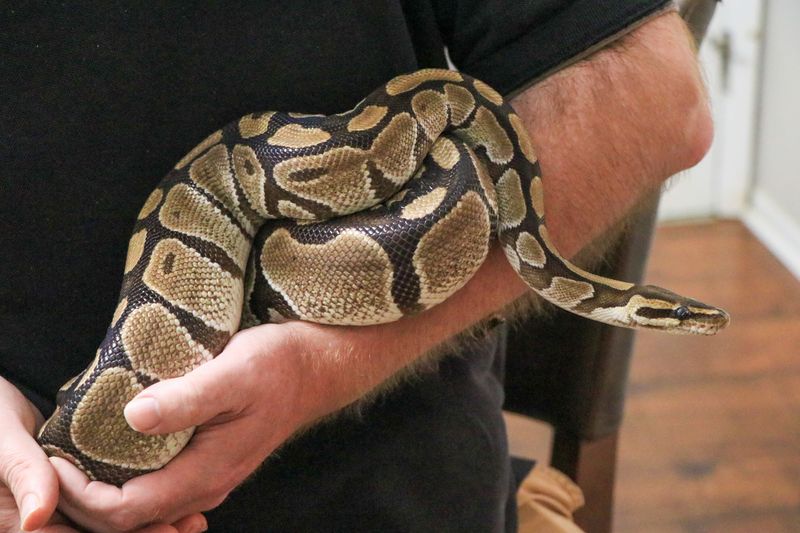
The Ball Python, a beloved pet, captivates with its shy yet curious nature. Its name comes from its unique defensive mechanism of curling into a tight ball when threatened. This gentle creature is known for its docile temperament, making it a favorite among snake enthusiasts.
With an average length of 3 to 5 feet, it fits comfortably in small spaces, offering a manageable size for new snake owners. Its varied patterns and colors add to its allure, making each Ball Python a unique and beautiful companion.
A fun fact: Ball Pythons are native to West and Central Africa, thriving in grasslands and open forests. Search query: Ball Python pet snake
Corn Snake

Corn Snakes, with their captivating colors, are a top choice for beginners. Known for their adaptability and ease of care, they thrive in various environments. These snakes are named for the corn-like pattern on their bellies, a fascinating feature that adds to their charm.
Averaging 4 to 5 feet in length, Corn Snakes are manageable for most snake lovers, offering vibrant patterns ranging from bright reds to subtle creams. Their calm disposition and willingness to be handled make them ideal companions.
Did you know? Corn Snakes are native to the southeastern United States, often found near fields and barns. Search query: Corn Snake beginner pet
California Kingsnake
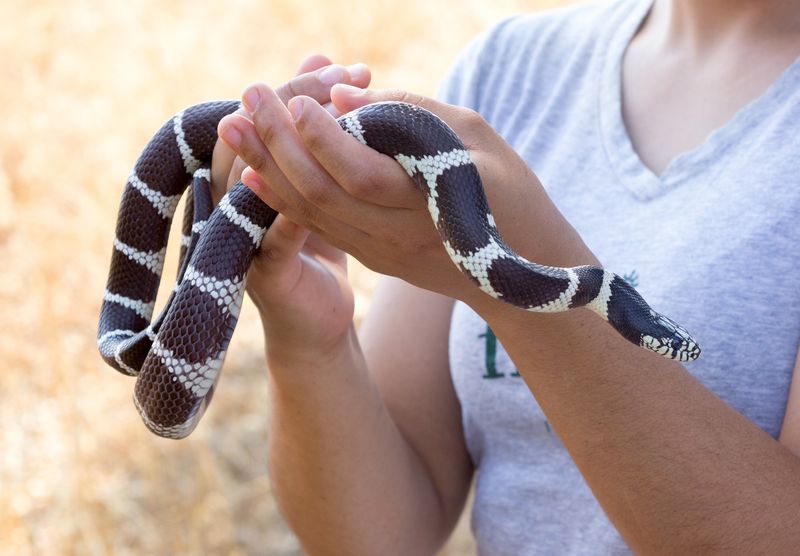
The California Kingsnake is a striking reptile, admired for its bold black and white bands. Known for its adaptability, it’s a favorite among snake enthusiasts. This snake is non-venomous and has a curious nature, often exploring its surroundings.
Growing up to 4 feet, it is manageable yet impressive in size. Its diet consists mainly of rodents, and it is known for its ability to eat other snakes, including venomous ones.
An interesting fact: The California Kingsnake can be found in a variety of habitats, from forests to deserts, throughout the western United States. Search query: California Kingsnake pet
Rosy Boa

Rosy Boas are gentle and slow-moving, making them perfect for novice snake owners. With their smooth scales and warm colors, ranging from rosy pinks to browns, they are visually appealing. These boas are known for their calm demeanor and adaptability to human interaction.
Typically growing to about 3 feet in length, they are compact and easy to handle. Rosy Boas thrive in arid environments, often found in rocky areas where they hunt for small mammals.
Fun fact: Rosy Boas are one of the few boa species native to the United States, primarily found in the southwestern regions. Search query: Rosy Boa pet snake
Garter Snake
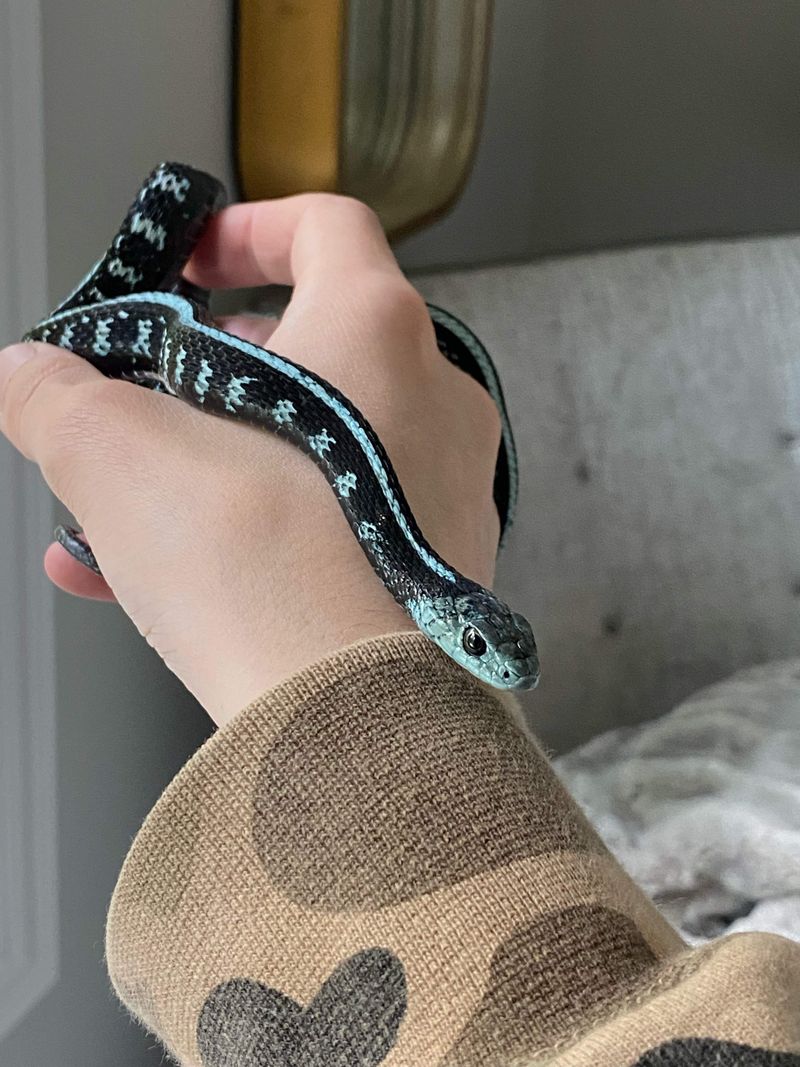
Garter Snakes are small, agile creatures that thrive in gardens, making them intriguing pets. Known for their slender bodies and vibrant stripes, they are easy to care for and adapt well to captivity. These snakes are active and enjoy exploring their surroundings.
Growing to about 2 to 4 feet, Garter Snakes are suitable for those with limited space. They have a varied diet, often consuming earthworms, amphibians, and fish.
Did you know? Garter Snakes are found across North America and are one of the most common and widely distributed snakes on the continent. Search query: Garter Snake pet
Milk Snake

Milk Snakes, with their vibrant red, black, and yellow bands, are a delightful addition to any herpetologist’s collection. These non-venomous snakes are known for their striking resemblance to the venomous coral snake, a mimicry that protects them from predators.
Typically growing 2 to 4 feet long, they are a manageable size for most snake enthusiasts. Milk Snakes are adaptable and thrive in various habitats, from forests to farmland.
An intriguing fact: The name “Milk Snake” comes from the myth that they milk cows, though they actually hunt for rodents and other small prey. Search query: Milk Snake pet
Children’s Python
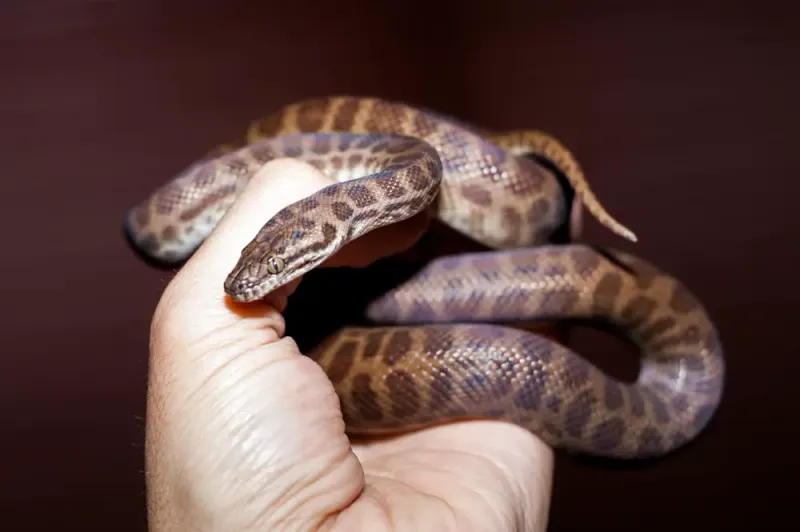
Children’s Pythons, named for their small size rather than their affinity for children, are a wonderful choice for those seeking a manageable pet snake. These pythons are known for their calm demeanor and ease of care.
Growing to about 3 feet, they are perfect for small spaces and personal interaction. They are native to Australia and thrive in a variety of environments, from forests to grasslands.
Fun fact: The Children’s Python was named after John George Children, a curator at the British Museum, not because they are meant for children. Search query: Children’s Python pet
Hognose Snake

The Hognose Snake is a charming creature renowned for its unique upturned snout, which it uses to burrow. Known for its dramatic defensive displays, it often plays dead when threatened.
This snake’s quirky personality makes it a favorite among enthusiasts. Growing between 1.5 to 3 feet, it’s a great choice for those wanting a smaller pet. Hognose Snakes are native to North America, often found in sandy areas.
A quirky fact: Despite their theatrical behavior, Hognose Snakes are harmless and rarely bite, preferring to bluff their way out of trouble. Search query: Hognose Snake pet
King Snake

King Snakes are celebrated for their striking patterns and versatility, often kept as pets for their ease of care. Known to prey on other snakes, including venomous ones, they possess a natural immunity to venom.
These snakes grow about 3 to 4 feet in length, making them a manageable size for most. Their diverse patterns, from bands to stripes, add to their appeal. King Snakes are adaptable, thriving in various habitats across North America.
Did you know? King Snakes are named for their habit of eating other snakes, truly reigning king in their domain. Search query: King Snake pet
Rat Snake

Rat Snakes are known for their sleek bodies and adaptability, often found in forests and farmland. These non-venomous snakes play a crucial role in controlling rodent populations.
With lengths reaching up to 6 feet, they are impressive creatures that exhibit a variety of colors, from yellow to black. Rat Snakes are often kept by those who appreciate their low maintenance and ecological benefits.
An interesting tidbit: Despite their name, Rat Snakes do not exclusively eat rats; their diet can include birds and other small animals. Search query: Rat Snake pet care
Smooth Green Snake
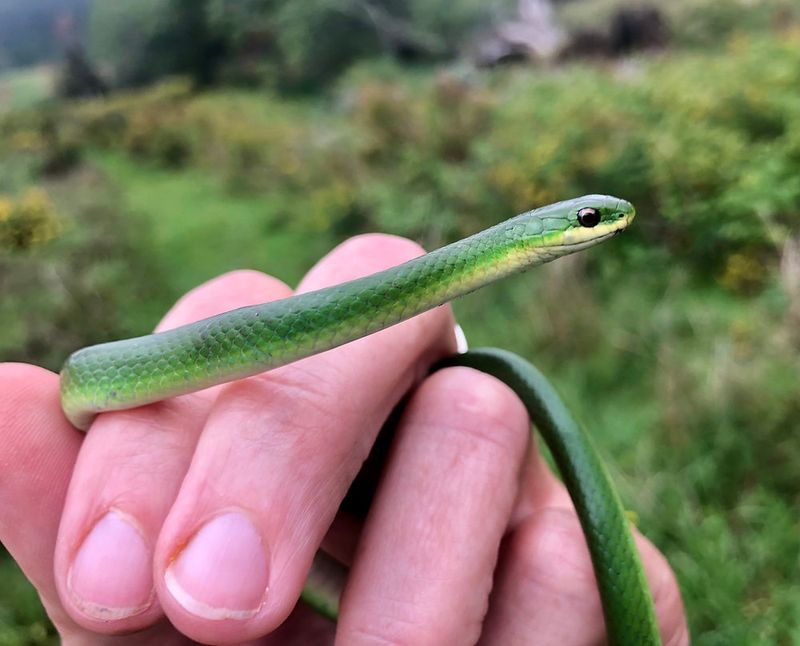
The Smooth Green Snake is a captivating creature, instantly recognizable by its vivid green hue. This small, insectivorous snake is known for its gentle demeanor and ease of care.
Growing to about 2 feet, they are perfect for those with limited space. Their diet consists mainly of insects, making them unique among pet snakes. Smooth Green Snakes are often found in lush gardens and meadows.
Fun fact: Their bright color provides excellent camouflage among foliage, making them both elusive and enchanting. Search query: Smooth Green Snake pet
African House Snake
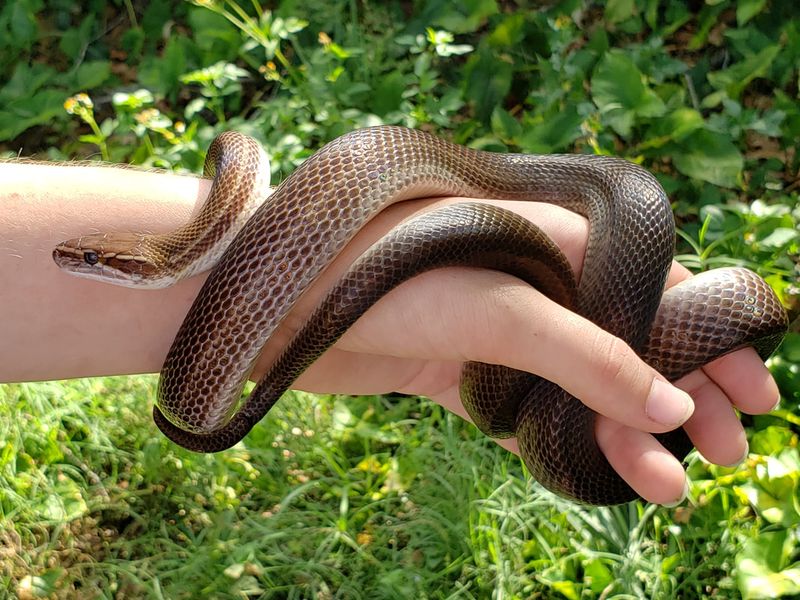
African House Snakes are popular for their docile nature and adaptability to human interaction. These snakes are small to medium-sized, with lengths ranging from 2 to 4 feet.
Known for their ease of care, they thrive in captivity and are a great choice for beginners. African House Snakes have a variety of color morphs, adding to their appeal.
Did you know? These snakes are native to sub-Saharan Africa and have been kept in homes to control rodent populations, truly living up to their name. Search query: African House Snake pet
Green Tree Python
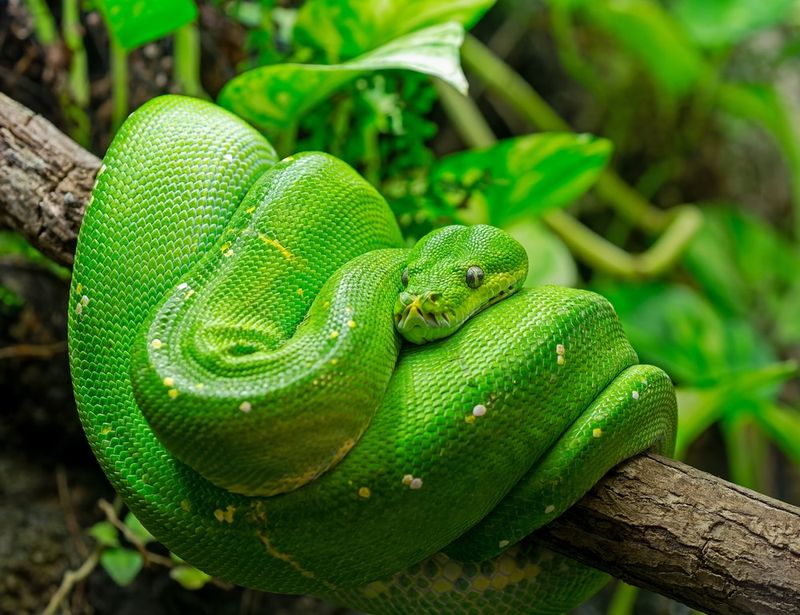
Green Tree Pythons are stunningly beautiful, known for their vibrant green color that blends seamlessly into their rainforest habitat. These pythons are arboreal, spending most of their time coiled in trees.
However, despite its visual appeal, it’s not recommended for beginner reptile keepers. These snakes are known for being temperamental and prone to striking, especially when handled frequently.
They also have very specific humidity and temperature needs, which can be difficult to maintain consistently in captivity.
Reticulated Python
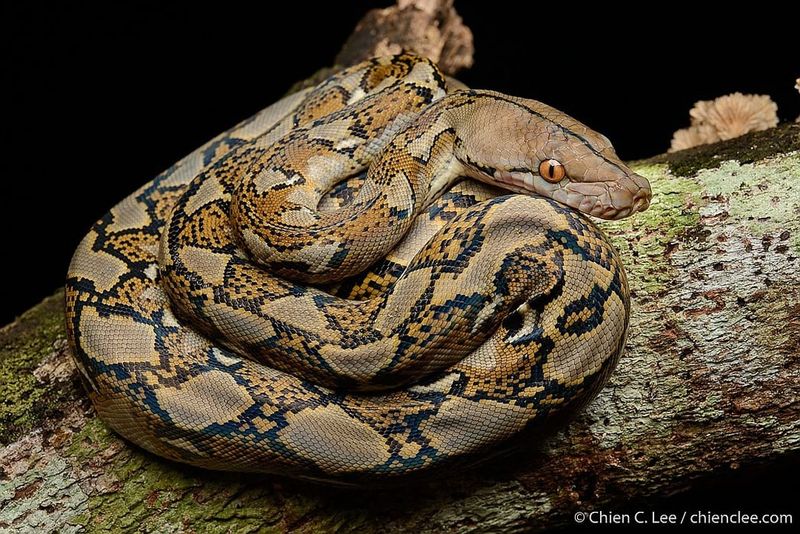
The Reticulated Python is a marvel of the snake world, known for being the longest snake species. Its intricate patterns and massive size make it both awe-inspiring and challenging to keep.
Reaching lengths of over 20 feet, these pythons require extensive space and expert care. They are not recommended for beginners due to their size and strength.
A fascinating detail: Reticulated Pythons are native to Southeast Asia and have been known to inhabit both forests and urban areas. Search query: Reticulated Python pet
Anaconda
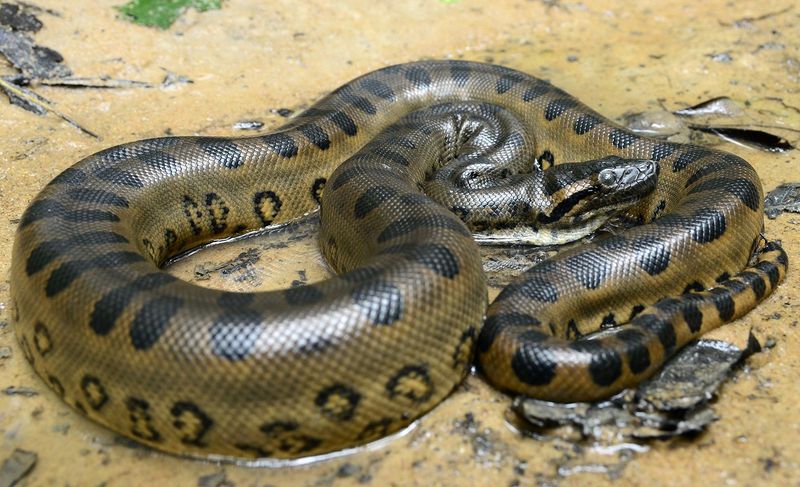
Anacondas are legendary for their size and strength, often regarded as the heaviest snake species. Found in South America, these aquatic snakes are formidable predators.
Reaching lengths of up to 30 feet and weights over 500 pounds, they are not suitable for most pet owners, requiring specialized care and habitat.
Did you know? Anacondas are capable swimmers and often hunt in water, using their stealth to ambush prey. Their massive size and strength make them a risky choice for captivity. Search query: Anaconda snake size
Boa Constrictor

Boa Constrictors are well-known for their powerful constriction abilities, used to subdue prey. These snakes are popular in the pet trade but require careful handling.
Growing up to 13 feet, they can be a challenge for inexperienced keepers. Boas are native to Central and South America, often inhabiting forests and grasslands.
Fun fact: Despite their intimidating reputation, Boa Constrictors can be quite docile in captivity with proper care and attention. Search query: Boa Constrictor pet care
Burmese Python
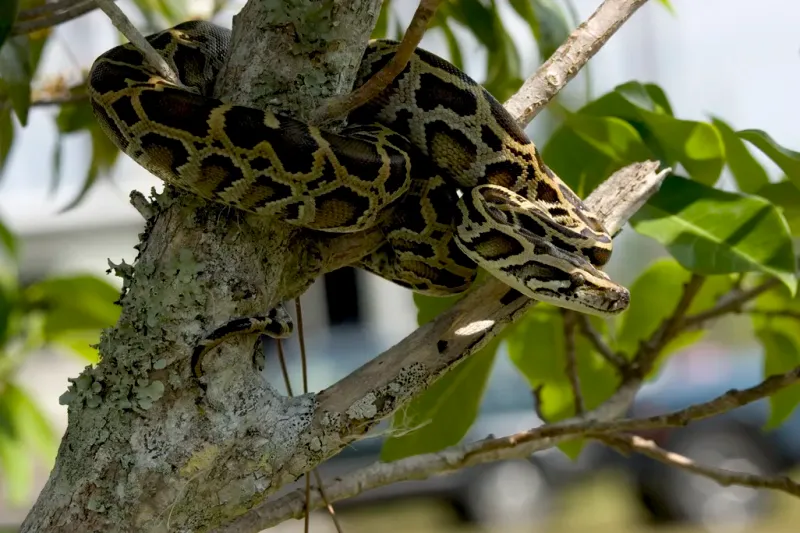
Burmese Pythons are among the largest snakes, known for their impressive size and strength. These giants require significant space and expertise to manage safely.
Reaching lengths of over 20 feet, they are not recommended for beginners. Burmese Pythons are native to Southeast Asia, thriving in forests and marshes.
An interesting fact: Despite their size, they are often found in the pet trade, leading to challenges related to their care and potential impact on local ecosystems. Search query: Burmese Python pet
African Rock Python
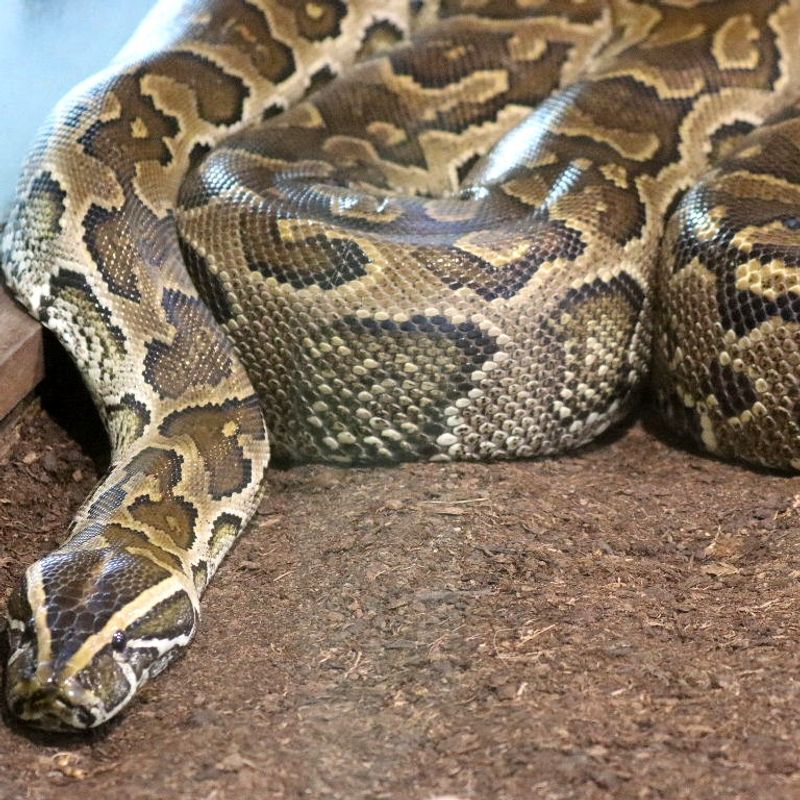
The African Rock Python, Africa’s largest snake, is both impressive and intimidating. Known for their immense size and strength, these snakes pose a challenge to even experienced keepers.
Growing up to 20 feet, they require extensive habitats and should only be cared for by experts. Native to sub-Saharan Africa, they are often found in savannahs and forests.
Did you know? The African Rock Python has been involved in several legends and myths, highlighting its powerful status in African cultures. Search query: African Rock Python pet
King Cobra
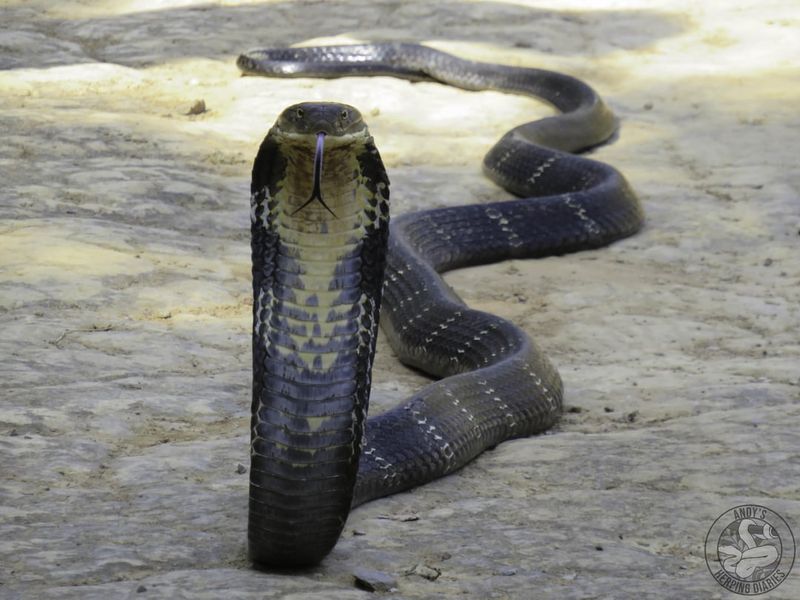
The King Cobra, a symbol of power and mystery, is the longest venomous snake, revered and feared alike. Its ability to “stand” and its potent venom make it a formidable presence.
Reaching lengths of up to 18 feet, King Cobras require specialized care and are illegal to own in many regions. They are native to forests in Southeast Asia, known for their intelligence and complex behaviors.
An intriguing fact: King Cobras are the only snakes that build nests for their eggs, showcasing their unique approach to parenting. Search query: King Cobra snake
Eastern Brown Snake
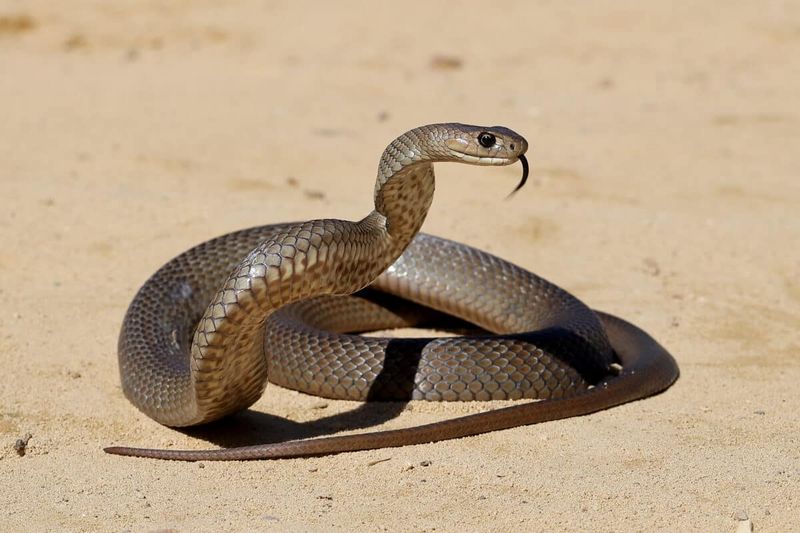
Eastern Brown Snakes are among the most venomous snakes in the world, known for their speed and aggression when threatened. These snakes are best admired from a distance.
Growing to about 6 feet, they are native to Australia and are often found in a variety of habitats, including urban areas. Their venom is highly toxic, making them risky pets.
Did you know? Despite their danger, Eastern Brown Snakes play a crucial role in controlling pest populations in their native ecosystems. Search query: Eastern Brown Snake
Rattlesnake
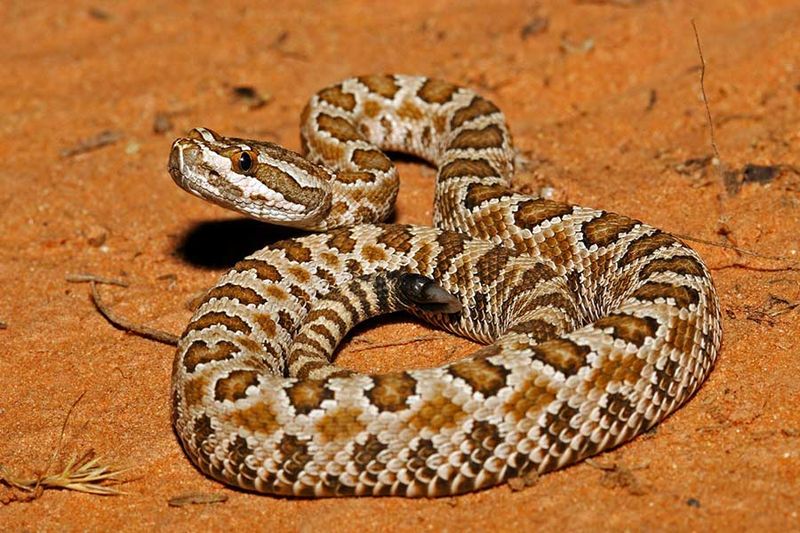
Rattlesnakes are well-known for the distinctive rattle at the end of their tails, a warning sign to potential threats. These venomous snakes are most common in the Americas.
With a variety of species, they generally range from 1 to 8 feet in length. Rattlesnakes are best left in the wild, as they require specific care and are dangerous to handle.
A fascinating detail: The rattle is made of keratin and can produce a buzzing sound as a deterrent to predators. Search query: Rattlesnake species
Gaboon Viper

The Gaboon Viper, known for its impressive size and striking patterns, has the longest fangs of any snake. Its venom is potent, making it a dangerous choice for a pet.
Reaching lengths of about 6 feet, the Gaboon Viper is best observed in its natural habitat, where it blends in with the forest floor. Native to African rainforests, it uses its camouflage to ambush prey.
Did you know? The Gaboon Viper’s fangs can reach up to 2 inches, capable of delivering a massive dose of venom. Search query: Gaboon Viper snake
Boomslang
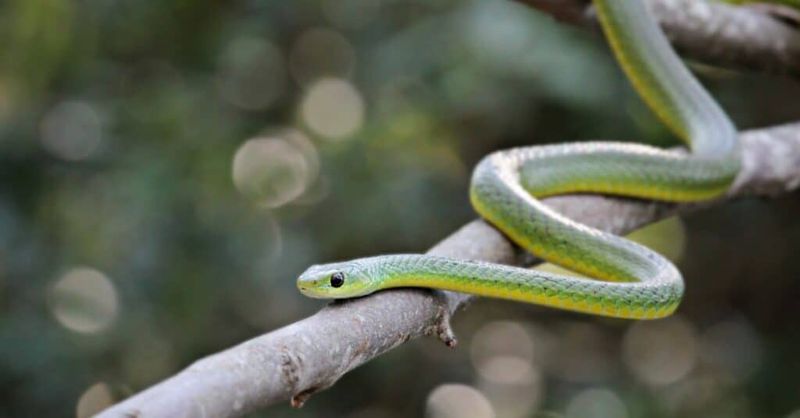
The Boomslang is a visually striking snake, famous for its bright green scales and large eyes. Despite its beauty, it possesses a highly toxic venom.
Growing to about 6 feet, Boomslangs are arboreal snakes found in sub-Saharan Africa. They are best appreciated in the wild due to their potent venom and specific habitat needs.
A curious fact: The name “Boomslang” translates to “tree snake” in Afrikaans, perfectly describing its arboreal lifestyle. Search query: Boomslang snake
Taipan
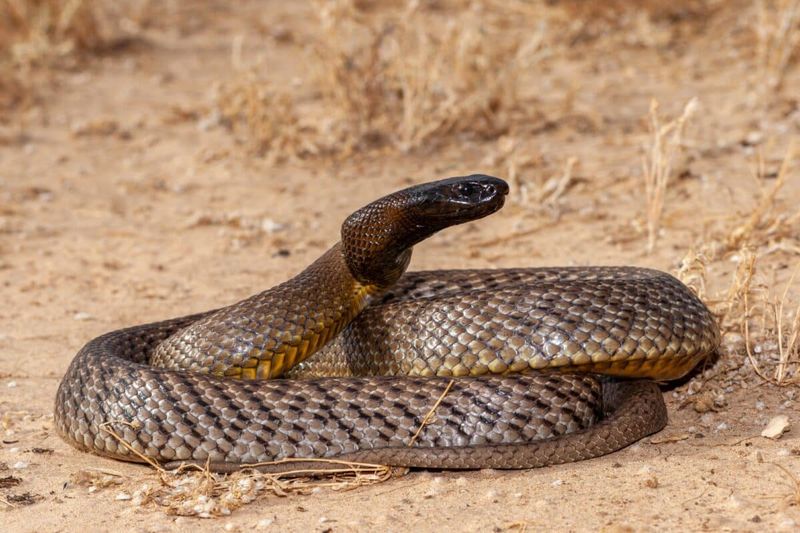
The Taipan, one of the world’s most venomous snakes, commands respect and caution. Found in Australia, it inhabits both coastal and inland regions.
Growing up to 9 feet, Taipans have potent venom that makes them a significant risk for captivity. These snakes are highly agile and should be admired from a safe distance.
Did you know? The Inland Taipan, also known as the “fierce snake,” has the most toxic venom of any terrestrial snake. Search query: Taipan snake

